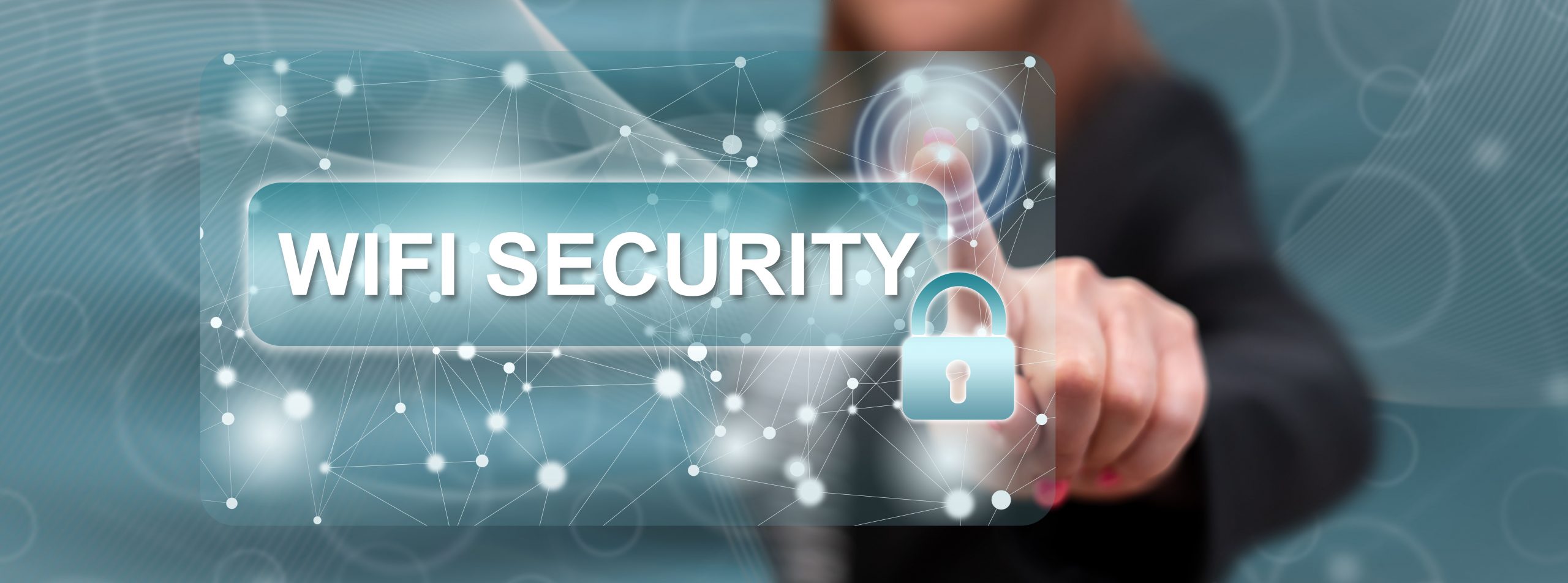One of the most frequently requested services by visitors to vacation rentals is guest WiFi.
For this reason, if you want to continue getting a steady stream of profitable reservations, you will eventually need to add guest WiFi for your rental property. These days, customers simply expect vacation rentals to have a certain level of standard amenities.
You risk losing those paying guests to your rivals who provide a free guest WiFi connection if your vacation rental falls short in this area. In the current digital era, visitors are more concerned with having unrestricted access to the internet during their stay than they are with amenities like a dishwasher or pay TV.
Because of this, you must offer customers a reliable and, above all, secure rental WiFi service while assuring their appropriate use.
Installing guest WiFi in your holiday rental house entails risks, of course. Visitors or other persons can abuse internet access, subjecting you to liability. Every business will inevitably have to take that risk in exchange for profit.
Without having a high level of skill in cyber-security, you can be sure to completely prevent this worst-case situation if you know how to provide a secure rental WiFi connection.
Best Practices for WiFi in Vacation Rentals
You don’t need to be a tech expert to protect your WiFi network from unexpected visitors. Just carry out these easy steps! A few experts in vacation rentals have also shared their own experiences with the rules and restrictions of guest WiFi.
1. Open the dashboard for router setup
Since most of the advice we will give you is related to those internal settings, you must first learn how to access your router’s setup panel.
You must use a cable to connect one of your devices to the router to gain access, then type its IP address into your preferred web browser (it should be something similar to 192.168.0.1, although in case of any doubts just call your internet provider to double-check).
Once you’ve logged in to the router setup dashboard, you can make the necessary adjustments to protect your rental property’s guest WiFi.
2. Modify the WiFi password for visitors.
Since you didn’t choose them, preset passwords are typically neither the strongest nor the most straightforward to remember. Fortunately, you can quickly and easily update your guest’s WiFi password.
Simply use the previously described method to access the router configuration dashboard and select a combination of integers, special characters, and uppercase and lowercase letters. Be cautious to refrain from sharing any private information, such as your birthdate or pet name!
Although it should be evident, the biggest problem with corporate wireless networks is frequently weak passwords. Frequent cyberattacks and unauthorized access from users who are not clients or employees are brought on by them.
Precaution is therefore advised. Even though it might seem overkill, we advise updating the WiFi password once each visitor has checked in. The only way to guard against illegal access and misuse of your network by previous visitors is to do this.
3. Rename your network
Although this doesn’t directly increase the security of your guest’s WiFi, it will make it simpler for your visitors to identify the network when they attempt to connect for the first time after their arrival.
Select a name for your guest WiFi network associated with your vacation rental brand, location, or company. By doing this, you can more effectively set your network apart from the competition and strengthen the consistency of your company’s brand.
Change the default network names to something succinct and simple to type as they are typically tiresomely long and convoluted. Newcomers may easily look for the network on your property, and it won’t adversely affect the security of your guests’ WiFi.
4. Guard and maintain the router on your building.
Typically, individuals place the router close to their computer or TV. That’s entirely acceptable in your own house, but not at your vacation home where you frequently host a variety of visitors, including young children and possibly even dogs.
To prevent anyone from touching or moving the router, it is best to keep it somewhere and out of sight of your visitors. The likelihood of irresponsible handling of the device will already be decreased by this straightforward approach (when a WiFi connection issue arises, most people immediately begin fiddling with the router to fix it).
You might even store it in a box or drawer that is locked with a code that you would only reveal to your visitors in an emergency.
Since updates are used to enhance security systems, updating your router is equally critical. Hackers frequently conduct arduous research before discovering a gap through which they can enter another person’s network. By closing the open cracks, regular updates will defend the user from such cyber-attacks.
Do you have any doubts regarding whether your router has an update? Simply verify and double-check on your configuration panel.
5. Specify the WiFi rules for visitors.
Of course, when vacationers are finally ready to unwind and rest, the last thing they want to do is read a rule book.
However, you must still make them aware of the internet usage policies for your guest WiFi that they must follow while staying at your holiday home. If you don’t do this, you can have visitors who use your WiFi connection to download illicit content.
Dan Z:
I provide free guest WiFi, however, I do place some restrictions on it by forbidding access to peer-to-peer, pornographic, nudity, etc. sites. How? I run my DNS server with OpenDNS. Some people may find this a little technical, but if you create an account with OpenDNS, you can use their website to configure your network to restrict particular types of traffic, a view of which websites were visited, etc. Visit www.opendns.com to see it. Hope this is useful!
Since the network is owned and registered in your name, take steps to avoid becoming implicated as well. The result could be a more or less sizable fine, depending on the country where your property is located.
S Fiorbellina
We offer free WiFi to visitors, but following Italian law, we must ask them to fill out a form with their IN/OUT dates and a statement that we are not responsible for how they use the internet.
Many activities carried out on your property’s guest WiFi tend to err on the side of lawlessness. You must therefore set up some fundamental guidelines for internet usage.
Simply add a section to your vacation rental regulations that cover an internet usage agreement. Make sure to note that the appropriate fine must be paid out of pocket by anyone who downloads unlawful content through the accommodation’s network. You can also decide that any visitor who uses more than 12.5 GB in a week must pay a higher ultimate rate.
Nick M:
We offer 50 GB per month with a notice that users who exceed their 12.5 GB weekly allotment risk incurring a $20 upgrade fee to the next allowance (200 GB per month). I do this action because I know households with children who can download 10 GB of music or movies and play games in a single day. My service would be slowed down if it occurred during the first week of my billing cycle unless I upgraded for the month. However, we would typically only use around 20 GB each month.
My guest WiFi terms and conditions also include the following sentence: “ADSL WiFi and satellite TV are offered merely as a convenience and are not included in the license to use the property. There will be no refunds for outages, content, lack of material, speed, access issues, user ignorance, or individual preferences about services. There is a password required to access the guest’s WiFi.
6. Distinguish your network from that of the visitors.
Sharing a network with your visitors can lead to a variety of issues. You incur the possibility of someone abusing your network, which will slow down the WiFi connection overall.
Many businesses do not care to differentiate between the internal network connection and the client-facing network connection. As a result, cyberattacks and outside hacking are much more likely to target their internal resources.
By creating a separate guest WiFi network for guests only, you can guard against the latter and reduce the chance that your rental property WiFi may become a problem.
Gaye W:
“We have created a separate network with its password just for visitors. We kindly request that visitors respect the monthly data use cap and refrain from downloading or streaming huge files because we can only obtain satellite broadband. No issues so yet.”
As was already indicated, don’t forget to change the password following each visit and/or turn off the guest’s WiFi while no one is occupying your holiday home. This will decrease the possibility of unwanted people using your rented WiFi connection.
By doing this, you can both protect yourself and ensure that your visitors respect the cap by limiting their weekly or monthly internet consumption.
7. Create a guest wireless network
You can gain from setting up a Guest WiFi network in addition to being protected. How? by allowing you, as the owner or manager of a vacation rental, to collect and handle visitor information like names or emails – with their explicit consent, of course!
After that, you can use this information to send marketing emails to your clients (and future customers) with fresh offers or other pertinent information.
Visitors will be directed to a site after connecting to your WiFi, where they must enter their names and email addresses to use the Internet (similar to how it operates at coffee shops or airports when a user attempts to connect to the WiFi network).
With StayFi, you can transform an ordinary and necessary action, like connecting to WiFi, into a chance to promote your business. Visitors might be led to your website after providing their information so they can learn more about you. This is a fantastic idea, especially if your visitors made their reservations on websites like Booking.com or Airbnb.









